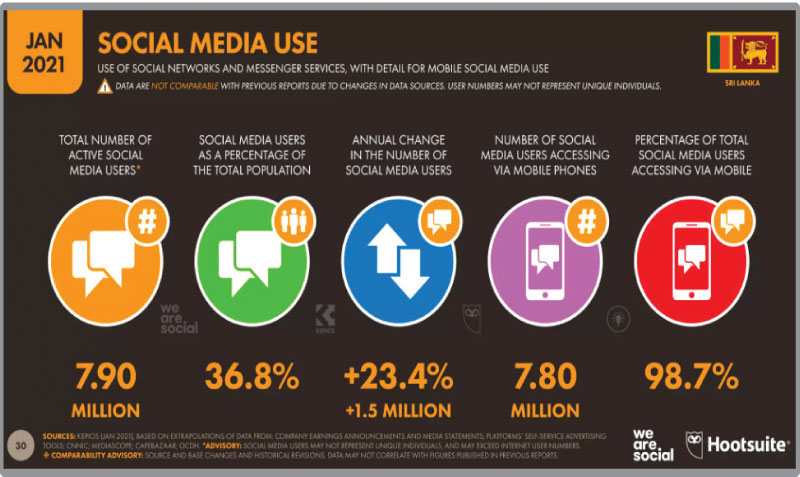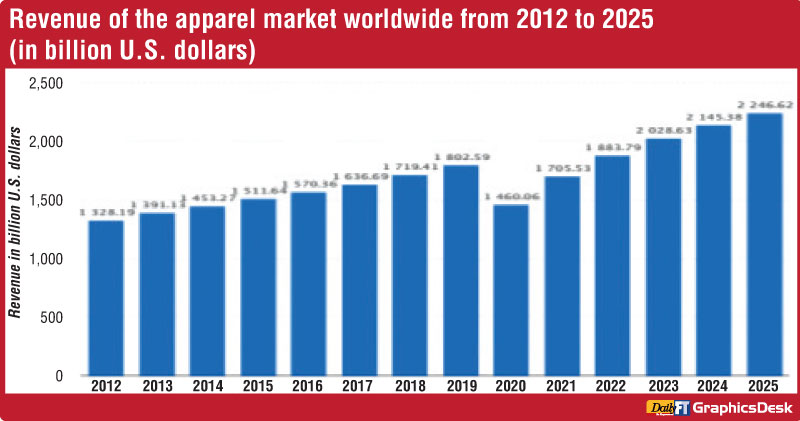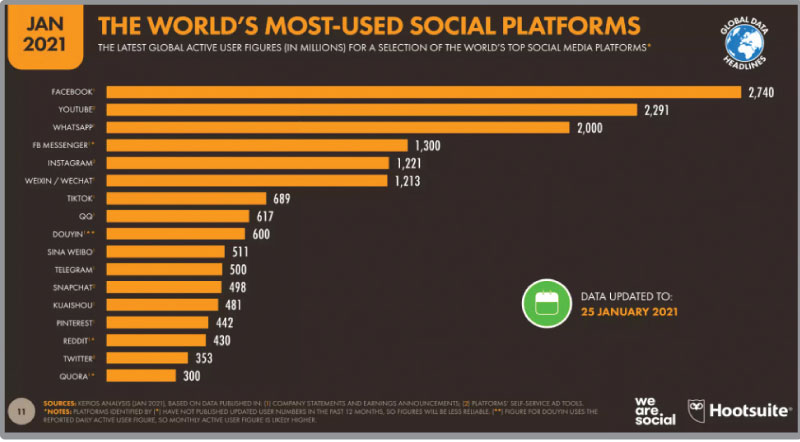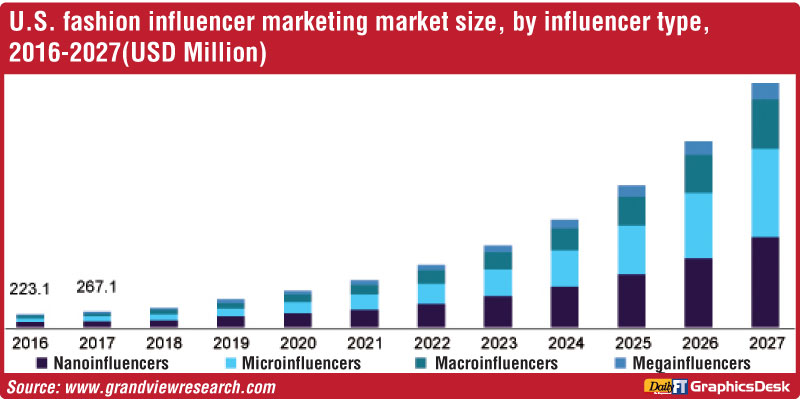Sunday Dec 14, 2025
Sunday Dec 14, 2025
Wednesday, 31 January 2024 00:05 - - {{hitsCtrl.values.hits}}





 By Dharshana Jayasinghe
By Dharshana Jayasinghe
In the ever-evolving world of fashion, a seismic shift is taking place. The rise of social media influencers (SMIs) is rewriting the rules of the branded fashion retail business, reshaping the way consumers engage with iconic brands such as, Giorgio Armani, Victoria’s Secret, Gucci, and Ralph Lauren.
The vast scale of this transformation can be highlighted as follows:
Figure 1: Market size of global apparel industry 2012-2025
Fashion, as one of the world’s most enduring industries, has undergone a remarkable transformation, largely fuelled by the fourth industrial revolution. Its contribution to the global gross domestic product remains substantial.
Yet, in the fiercely competitive realm of branded fashion, the key to success lies in how consumers perceive a product. Traditional marketing practices have given way to digital strategies, with SMIs taking centre stage in delivering brand messages and cultivating customer loyalty. This is further underscored by world trends on social media usage.
Figure 2: World’s most used social platforms Source: Hootsuite
The advent of social media has empowered celebrities to connect directly with their followers. Simultaneously, fashion marketers have harnessed the potency of SMIs to create intimate connections with consumers and nurture unwavering brand loyalty.
During the pandemic, digital channels became the lifeline of the fashion industry, and this trend is here to stay. Influencer marketing, though not a novel concept, experienced a pandemic-fuelled acceleration. Brands partnered with SMIs that resonated with their target audiences, devising potent communication strategies that reached consumers in a cost-effective manner.
Figure 3: U.S. Fashion IM market size
Source: Global View Research
This study, with a unique focus on the Sri Lankan context, delves into the significance of social media in the branded fashion industry. It advocates a refined approach to selecting SMIs for promoting branded fashion, emphasising qualities beyond mere numerical indicators.
Figure 4: SL social media usage Source: Hootsuite
Quality, trust, psychological factors, and social factors all deeply influence consumer perceptions of brand building in the fashion industry. Marketers have deployed various methods, including celebrity endorsements in electronic advertising media and visual merchandising at outlets, to address these facets.
In response to emerging markets and the demands of younger consumers, fashion brands have reinvented themselves through digital marketing, with social media platforms emerging as primary sources of information for consumers.
Figure 5. Framework of key attributes of successful SMFIs
The pandemic’s onset witnessed a surge in social media usage, with consumers increasingly turning to these platforms for product identification, research, and purchases. However, the absence of in-store visual merchandising during the pandemic significantly impacted brand perception and purchase intent.
While social media marketing allowed fashion brands to deliver visual content, SMIs played a pivotal role in establishing deeper connections with consumers. These influencers, comprising content creators, multiplicators, moderators, and protagonists, proved indispensable during the COVID-19 pandemic.
The rise of micro-social media influencers further underscored their significance in the fashion industry. These influencers effectively collaborated with online fashion marketers, showcasing products on platforms such as, Instagram.
In the branded fashion industry, consumers seek deeper connections founded on quality, trust, psychological factors, and social factors. While celebrity endorsements partially fulfil these aspects, SMIs excel at forging profound connections with their audiences.
SMIs maintain a more personal following, wield significant influence over their followers, and possess a deep understanding of audience perceptions and behaviours, making them invaluable opinion leaders.
In Sri Lanka, influencer marketing is still in its infancy. While some SMIs have been identified, only a select few can truly be considered social media fashion influencers (SMFIs). The selection should be based on a careful analysis of the attributes essential for effective influence.
To maintain their status as influencers, SMFIs must build trustworthiness and appeal to fashion brands as messengers. This article explores the impact of social media influencer marketing in the branded fashion industry and reviews the attributes essential for SMI success.
The research conducted using a deductive approach and existing literature, establishes that SMIs wield a substantial impact on fashion brands. It proposes a conceptual framework for successful SMFIs, encompassing attributes significant to both the audience and fashion brands. SMFIs cultivate brand engagement, love, and effective brand evangelism.
Although research on SMIs has burgeoned in recent years, their role in propelling brand growth remains a topic ripe for validation. As the fashion industry continues its digital transformation, the influence of SMIs is expected to loom even larger on the horizon.
In summary, SMIs are the catalysts of change in the branded fashion industry. As fashion continues its journey into the digital age, its role in shaping consumer perceptions, fostering brand loyalty, and driving growth cannot be understated. The future of fashion is inextricably linked to the influence of these digital trendsetters and as marketing continues to be personalised, further research on SMIs can be expected.
(The writer is an Assistant Vice President, Marketing in a leading private sector commercial bank. He holds a Masters in Business, Management, Marketing and related support services and also a Bachelor’s in Marketing. He is he is currently reading for his doctorate.)